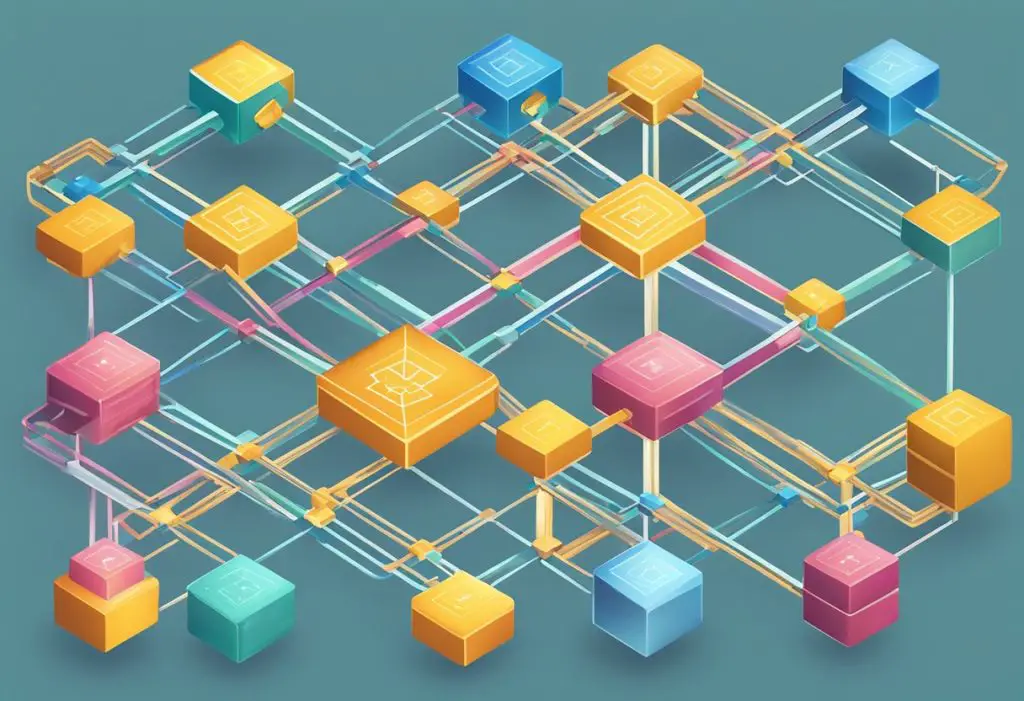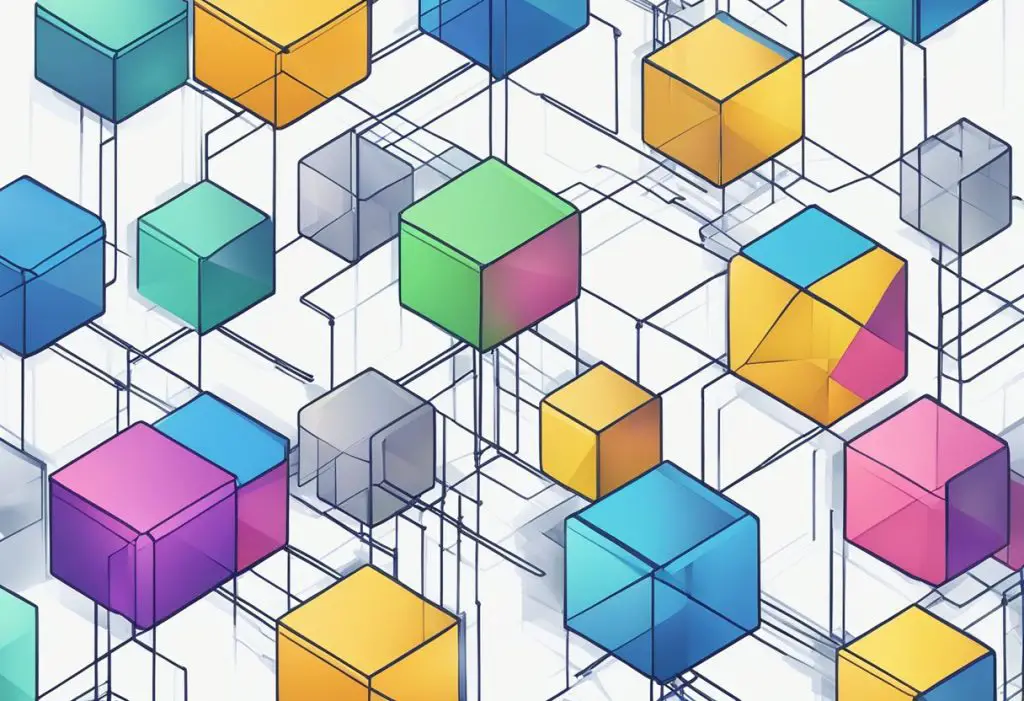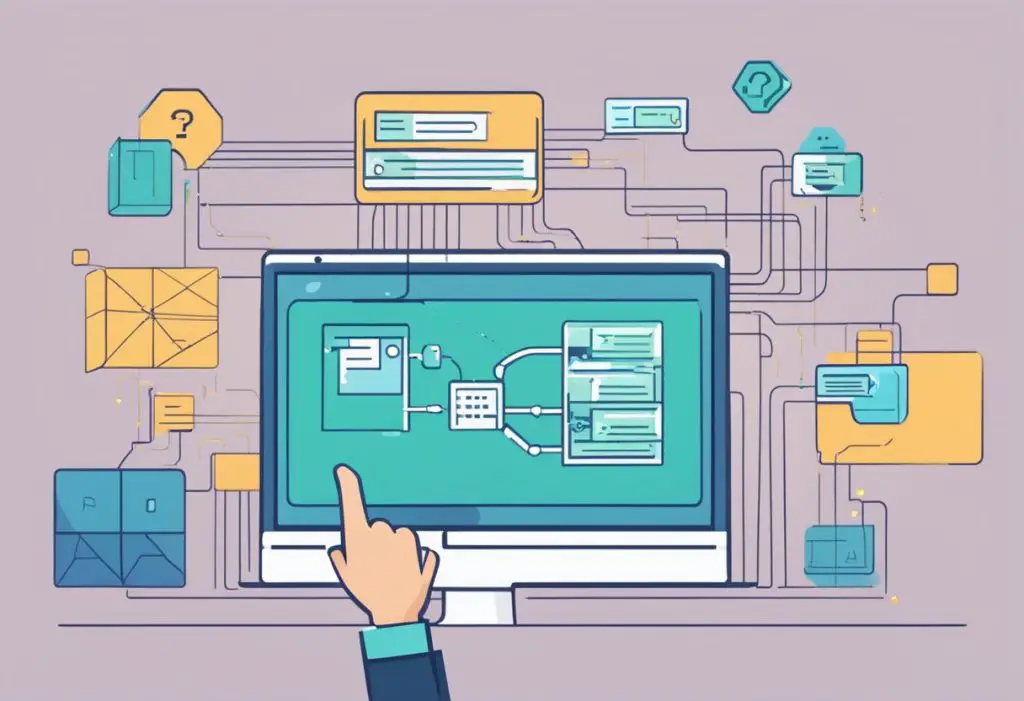Table of Contents
Introduction to Blockchain 101
Blockchain technology is a new and exciting field that has the potential to revolutionize many aspects of our lives. At its core, blockchain is a decentralized, immutable ledger that allows for secure and transparent transactions. It has become increasingly popular in recent years, as more and more people have begun to recognize its potential.
Understanding the fundamentals of blockchain is essential for anyone looking to get involved in this exciting field. Key technologies such as cryptography, consensus algorithms, and smart contracts are all crucial components of blockchain technology. By gaining a solid understanding of these technologies, individuals can begin to explore the many applications and use cases of blockchain technology.
Overall, blockchain technology has the potential to transform the way we interact with each other and the world around us. Whether you are a business owner, investor, or simply interested in learning more about this exciting technology, there is no doubt that blockchain will have a significant impact on our lives in the years to come.
Key Takeaways
- Blockchain is a decentralized, immutable ledger that allows for secure and transparent transactions.
- Understanding key technologies such as cryptography, consensus algorithms, and smart contracts is crucial for anyone looking to get involved in blockchain.
- Blockchain technology has the potential to transform many aspects of our lives, from finance and healthcare to supply chain management and more.
Understanding Blockchain Fundamentals

Blockchain 101 Image 1
Blockchain technology is a revolutionary concept that has the potential to change the way we conduct transactions. It is a decentralized, distributed ledger that records transactions in a secure and tamper-proof manner. Blockchain technology is based on a few fundamental concepts that make it unique and powerful.
Blocks and Transactions
At its core, a blockchain is a chain of blocks that contain information. Each block contains a list of transactions that have been verified and added to the chain. When a new transaction is added to the blockchain, it is first verified by the network of nodes that make up the blockchain. Once verified, the transaction is added to a block, which is then added to the chain.
Decentralization and Peer-to-Peer Network
One of the key features of blockchain technology is its decentralized nature. Unlike traditional systems, where a central authority controls the network, blockchain is a peer-to-peer network that is controlled by the nodes that make up the network. This means that there is no single point of failure, and the network is more secure and resilient.
Cryptography and Security
Cryptography is the science of securing information and communications. In the context of blockchain technology, cryptography is used to secure transactions and ensure that they cannot be tampered with. Each transaction is secured with a hash, which is a unique identifier that is generated using cryptographic algorithms. Once a transaction is added to the blockchain, it becomes immutable, meaning that it cannot be changed or deleted.
Blockchain technology is still in its early stages, but it has the potential to revolutionize the way we conduct transactions and store information. Its decentralized nature, combined with its use of cryptography and security, make it a powerful tool for ensuring trust and transparency in a variety of industries.
Key Blockchain Technologies

Blockchain 101 Image 2
Bitcoin and Satoshi Nakamoto
Bitcoin is the first and most well-known application of blockchain technology. It was invented by an unknown person or group of people under the pseudonym Satoshi Nakamoto in 2008. The Bitcoin blockchain is a decentralized, distributed ledger that records all transactions on the network.
The Bitcoin network uses a consensus algorithm called Proof-of-Work (PoW) to validate transactions and add new blocks to the blockchain. PoW is a computationally intensive process that requires miners to solve complex mathematical problems in order to validate transactions and earn rewards in the form of newly minted bitcoins.
Ethereum and Smart Contracts
Ethereum is a blockchain platform that enables the creation of decentralized applications (dApps) and smart contracts. It was created by Vitalik Buterin in 2013 and launched in 2015. Ethereum uses a different consensus algorithm than Bitcoin called Proof-of-Stake (PoS).
Smart contracts are self-executing contracts with the terms of the agreement between buyer and seller being directly written into lines of code. They are stored on the Ethereum blockchain and can be used to automate complex financial transactions, such as the issuance of a new cryptocurrency or the execution of a trade.
Proof-of-Work vs. Proof-of-Stake
Proof-of-Work (PoW) and Proof-of-Stake (PoS) are the two most common consensus algorithms used in blockchain networks. PoW is used by Bitcoin and other cryptocurrencies and requires miners to solve complex mathematical problems to validate transactions and add new blocks to the blockchain.
PoS, on the other hand, requires validators to hold a certain amount of cryptocurrency as a stake in the network. Validators are chosen to validate transactions and add new blocks to the blockchain based on the amount of cryptocurrency they hold as a stake. This reduces the amount of computational power required to validate transactions and adds new blocks to the blockchain, making it more energy-efficient than PoW.
Blockchain Applications and Use Cases

Blockchain 101 Image 3
Blockchain technology has been around for more than a decade, and its applications have grown beyond its initial use case in cryptocurrencies. This section will explore some of the most significant applications and use cases of blockchain technology.
Cryptocurrencies and Trading
Cryptocurrencies such as Bitcoin and Ethereum have been the most popular use cases of blockchain technology. Blockchain technology enables the creation of digital currencies that are decentralized, secure, and transparent. Blockchain technology has revolutionized the way people trade assets, and it has enabled the creation of new financial instruments such as non-fungible tokens (NFTs).
Blockchain in Supply Chain
Blockchain technology has the potential to revolutionize the supply chain industry by providing transparency and traceability. With blockchain, it is possible to track products from the source to the end consumer, ensuring that products are authentic and have not been tampered with. Blockchain technology can also help reduce fraud, increase efficiency, and reduce costs in the supply chain industry.
Expanding to Other Industries
Blockchain technology is not limited to cryptocurrencies and supply chain management. It has the potential to revolutionize other industries such as healthcare, digital currencies, and decentralized applications. Blockchain technology can provide secure and transparent record-keeping, which is essential in industries that deal with sensitive information such as healthcare.
Blockchain technology can also enable the creation of decentralized applications that are secure and transparent. Decentralized applications are applications that run on a blockchain network, and they are not controlled by a central authority. Decentralized applications can help reduce the risk of data breaches and ensure that users have control over their data.
In conclusion, blockchain technology has numerous applications and use cases, and its potential is still being explored. Its ability to provide secure and transparent record-keeping has the potential to revolutionize various industries, and it is likely that we will see more applications of blockchain technology in the future.
Interacting with Blockchains

Blockchain 101 Image 4
Interacting with blockchains involves buying and trading cryptocurrencies, managing blockchain wallets, and understanding blockchain governance.
Buying and Trading Cryptocurrency
To buy and trade cryptocurrencies, users need to create an account on a cryptocurrency exchange. These exchanges act as intermediaries between buyers and sellers and provide a platform to buy and sell cryptocurrencies. Users can buy cryptocurrency using fiat currency or other cryptocurrencies.
Trading cryptocurrencies involves buying and selling them on exchanges. Cryptocurrencies are highly volatile, and their prices can fluctuate rapidly. Therefore, users need to keep track of market trends and use technical analysis to make informed trading decisions.
Blockchain Wallets and Security
Blockchain wallets are digital wallets that store cryptocurrencies. These wallets have a public key and a private key. The public key is like a bank account number, and the private key is like a password. Users need to keep their private keys secure as anyone with access to the private key can access the wallet and the cryptocurrencies stored in it.
There are different types of blockchain wallets, including software wallets, hardware wallets, and paper wallets. Software wallets are digital wallets that can be accessed through a computer or a mobile device. Hardware wallets are physical devices that store cryptocurrencies offline. Paper wallets are physical copies of the public and private keys printed on paper.
Understanding Blockchain Governance
Blockchain governance refers to the rules and processes that govern how a blockchain operates. Blockchains use a consensus protocol to validate transactions and add them to the blockchain. Different blockchains use different consensus protocols, such as Proof-of-Work (PoW) and Proof-of-Stake (PoS).
In a PoW consensus protocol, miners compete to solve complex mathematical problems to validate transactions and add them to the blockchain. In a PoS consensus protocol, validators are chosen based on the number of cryptocurrencies they hold and their reputation in the network.
Blockchain governance also involves decision-making processes for making changes to the blockchain, such as upgrading the software or changing the consensus protocol. These decisions can be made through community voting or by a group of core developers.
Overall, interacting with blockchains involves understanding the basics of buying and trading cryptocurrencies, managing blockchain wallets securely, and understanding the governance processes that govern how a blockchain operates.
Frequently Asked Questions

Blockchain 101 Image 5
What are the fundamental principles behind blockchain technology?
The fundamental principles behind blockchain technology are decentralization, immutability, and transparency. Decentralization refers to the absence of a central authority or intermediary, which means that transactions are verified and recorded by a network of computers called nodes. Immutability means that once a transaction is recorded on the blockchain, it cannot be altered or deleted. Transparency refers to the fact that all transactions on the blockchain are visible to all participants, ensuring accountability and preventing fraud.
How does blockchain ensure data security and transparency?
Blockchain ensures data security and transparency through the use of cryptographic algorithms. Transactions are verified and recorded using complex mathematical equations that are difficult to hack or manipulate. The decentralized nature of the blockchain also makes it more secure, as there is no central point of failure that can be targeted by hackers.
Can you explain the different types of blockchains available?
There are three main types of blockchains: public, private, and consortium. Public blockchains, such as Bitcoin and Ethereum, are open to anyone and allow anyone to participate in the network. Private blockchains are restricted to a specific group of participants, such as a company or organization. Consortium blockchains are a hybrid of public and private blockchains, where a group of organizations come together to form a network.
What are the initial steps for a beginner to learn about blockchain?
The initial steps for a beginner to learn about blockchain include understanding the basics of cryptography, familiarizing themselves with the different types of blockchains, and learning how to use blockchain tools and platforms. It’s also important to stay up-to-date with the latest developments in the blockchain industry and to network with other blockchain enthusiasts.
How can blockchain be applied in real-world scenarios?
Blockchain can be applied in real-world scenarios in a variety of ways, such as in supply chain management, identity verification, and financial transactions. For example, blockchain can be used to track the movement of goods from the manufacturer to the consumer, ensuring transparency and accountability throughout the supply chain.
What resources are recommended for beginners to understand blockchain?
There are many resources available for beginners to understand blockchain, including online courses, forums, and books. Some popular resources include Coursera’s Blockchain Basics course, the Bitcoin Forum, and the book “Blockchain Basics: A Non-Technical Introduction in 25 Steps” by Daniel Drescher. It’s important to do your own research and find resources that suit your learning style and level of expertise.

